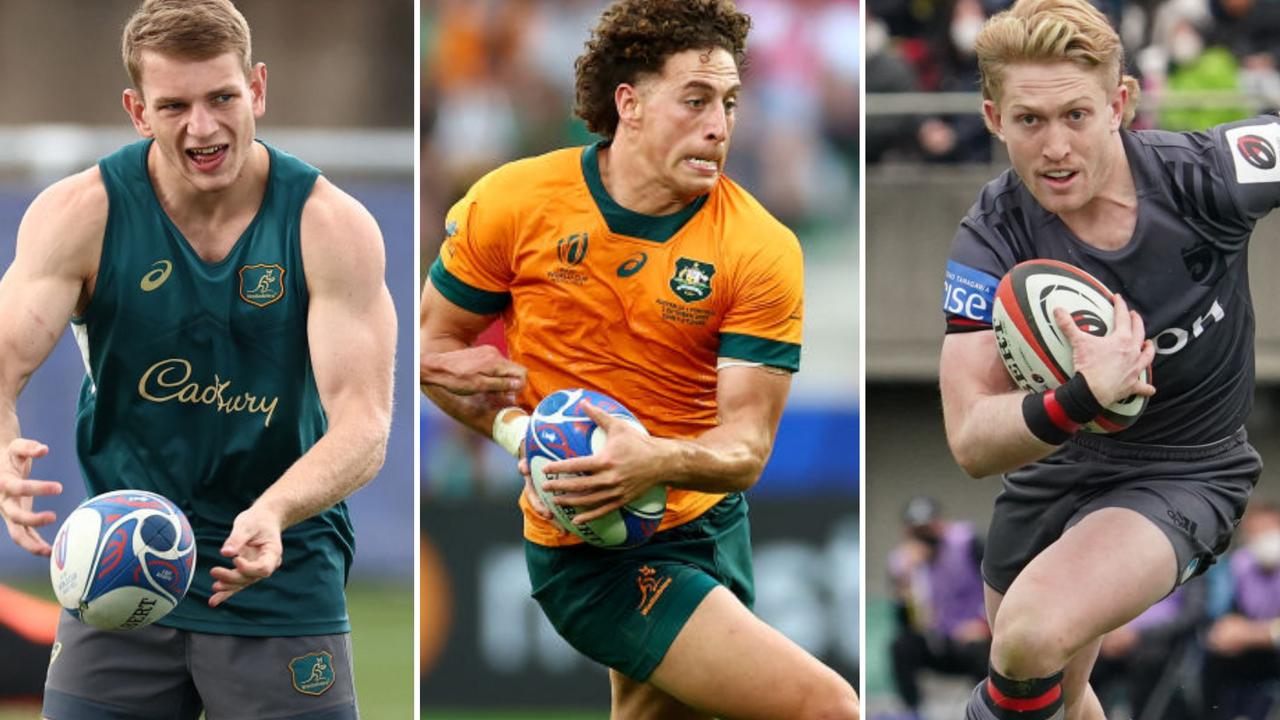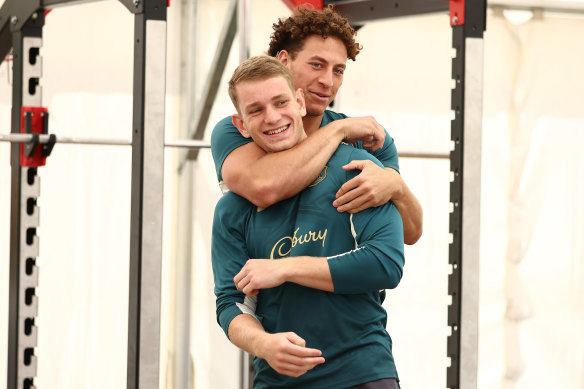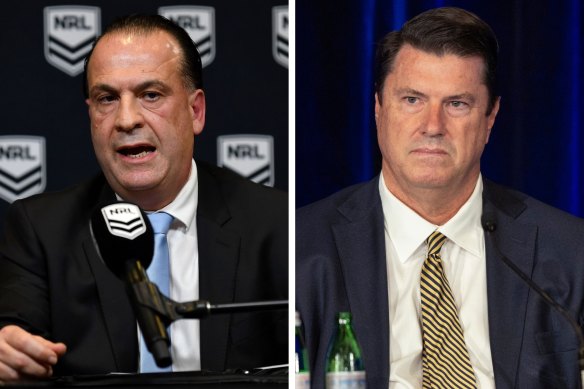must be the off-season if we’re talking about NRL clubs pillaging rugby union’s stocks.
Wasn’t Rugby Australia the one drawing up hit-lists and threatening to plunder NRL clubs not that long ago? Didn’t chairman
Hamish McLennandeclare he had Penrith superstar
Nathan Clearyfirmly in his sights, presumably through the lens of his monocle?
Oh. That all happened in April, you say. It’s hard to keep up.
This week, Roosters chairman
Nick Politis and coach
Trent Robinson met with NSW and Wallabies winger
Mark Nawaqanitawase to talk about jumping ship. It wouldn’t be a particularly big jump given RA’s headquarters at Moore Park is about a five-iron from the Nick Politis Centre of Excellence beneath Allianz Stadium.
The Roosters will need a winger in 2025 — which is when Nawaqanitawase becomes available — but you sense giving RA a black eye after it snatched
Joseph Suaalii from them earlier in the year is greater motivation.
Making the story sexier is the NRL raising the
possibility of granting salary cap relief to those clubs who poach rugby union talent.
Salary cap exemptions would make Mark Nawaqanitawase and Max Jorgensen even more attractive to NRL clubs.CREDIT: GETTY IMAGES
This is signature rugby league: an idea is floated, it gets reported, it gets debated and
voilà! It’s suddenly set in stone, when it is not.
NRL chief executive
Andrew Abdo confirmed no such concessions have been introduced, nor was there any detail about what such concessions could look like.
Most people forget rugby league has played this card before: from 1990 to 1996, clubs were given a total exemption if they signed rugby union talent.
According to former ARL boss
John Quayle, the exemptions were introduced because the competition was expanding to 20 teams. The AFL was exploring new markets, so rugby league had to move.
Players signed from rugby union were exempt for two years before their contract value was counted under the club’s salary cap, which was $1.8 million in 1995. (It was $12.1 million in 2023).
In 1995, more than a dozen rugby union players joined the ARL premiership, including Wallabies
Darren Junee (Roosters) and
Garrick Morgan(South Queensland Crushers). The biggest name was All Blacks star
John Kirwan, who signed with the fledgling Auckland Warriors.
The Roosters also secured Wallabies outside back
Peter Jorgensen, which is ironic because the player Politis really wants to snatch from rugby now is Jorgensen’s very talented 19-year-old son, Max, who also comes off contract at the end of next year.
Landing big-name rugby union internationals has been problematic for NRL clubs, as
Heraldcolleague
Iain Payten reported in 2015.
In 1995, Canterbury supremo Peter “Bullfrog” Moore had two enormous fishes on the line: All Blacks monster
Jonah Lomu and Springboks legend
Joost van der Westhuizen.
Moore wanted van der Westhuizen to replace
Terry Lamb, who was nearing the end of this career, and he travelled to Cape Town for a meeting a few days after the Rugby World Cup.
In a penthouse suite of one of the city’s finest hotels, Moore offered a staggering two-year contract worth $1 million. Normally, that would take up a quarter of the cap, but it was exempt because van der Westhuizen would be converting from rugby.
The deal was scuppered when South African rugby officials got wind of the meeting.
Another time, Moore sat in front of Lomu and his family at Canterbury Leagues Club. He wrote an offer on a piece of paper and excused himself to the bathroom, content that he was about to land the biggest name in world rugby.
When he returned, Lomu had moved the decimal point on the figure scribbled on the piece of paper — he wanted far more than the Bulldogs could afford, even with the exemption.
ARL Commission chairman Peter V’landys and Rugby Australia chairman Hamish McLennan.CREDIT: GETTY
Both codes had good reason to raid each other during the 1990s: rugby union was going professional and suddenly flush with broadcast money, while rugby league was on the brink of the Super League War.
Those days are long gone. It doesn’t make sense for the NRL to pick at the carcass of rugby union right now. Neither do salary cap concessions in a competition where which the difference between the haves and have-nots is widening.
V’landys is determined to devour rugby union because he considers it to be a competitor.
But why? Now that private equity is off the table for RA, and the code stumbles along following the
Eddie Jones catastrophe, is it really a serious threat to rugby league?
Many NRL clubs already have their claws in GPS schools, cherry-picking the best talent that comes along, although there are exceptions.
Jorgensen trained with the Roosters last summer and established a strong rapport with Robinson, but he stuck with rugby union because he genuinely loves the sport.
Many still do. It might be on its knees, but rugby is not dying any time soon. There are too many players who want to play rugby because it’s rugby, no matter how many dollars are thrown at them.
The NRL has a current obsession with pinching talent from other codes, whether from rugby union or the fanciful notion that it can turn young Americans who don’t want to play NFL into rugby league superstars.
Rugby league needs to worry about its own backyard — because, if you talk to those at a grassroots level, it’s shrinking.
Rugby league should concentrate on its own backyard before trying to pinch rugby’s best young talent.

www.smh.com.au

www.foxsports.com.au




